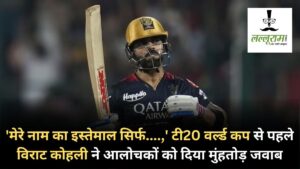Reviving a dying artwork of contact play
3 min readAt the pre-draw press convention for the Davis Cup tie between India and Denmark, the 2 captains eulogised a dying artwork. Against the backdrop of the well-maintained grass courts on the Delhi Gymkhana Club, Denmark’s Frederik Nielsen and India’s non-playing captain Rohit Rajpal spoke of the shortage of serve and volley in fashionable tennis. The acquainted lament got here with the hope that the tactic could come to the fore on the “old school grass” within the Capital.
“If you watch the Australian Open, the French Open, the US Open or Wimbledon, it all looks pretty much the same,” mentioned Nielsen. “You can play the same tennis on every surface these days. Even me as a coach or as a captain, it’s tough to encourage serve and volley because the conditions are so clean for returners.”
Nielsen, who gained the doubles crown at 2012 Wimbledon as a wildcard, elaborated how neither the situations nor gear is conducive to dashing to the online and killing off factors.
“The balls are too big, they’re too slow. The conditions are too slow. The equipment is too good. The racquets are too good, the strings are too good,” Nielsen rattled away. “It’s too easy to return and hit passing shots and you don’t get enough benefit out of serve-and-volley these days. The players can hit the returns as big as they want and neutralise the server. So it encourages baseline players.”
Rajpal, who acknowledged residence area provides a bonus in Davis Cup “unless they have a Federer or Nadal”, agreed on the fading relevance of serve and volley.
“Overall, the art of serve and volley is dying down since most of the tournaments around the world are on hard and clay,” says Rajpal. “The coaches are developing strong, athletic, stroking machines. These guys run down everything and hit the ball back very hard. The touch is gone. It is sad as that is the craft that you saw from a lot of Indian players. But over here, you’re gonna see a lot of serve and volley, at least from our side.”
Old-school grass
By selecting grass, the hosts are banking on Denmark’s common unfamiliarity with the floor, and the presence of serve-and-volleyers within the Indian contingent, mainly Ramkumar Ramanathan. The 27-year-old — whose solely singles closing on the ATP Tour got here on the Newport grasscourts in 2018 — volleys, chips and expenses whatever the floor.
“Grass is my favourite surface, as the ball keeps low and I serve and volley a lot,” Ramkumar tells The Indian Express. “I try to come in on the returns and put a lot of pressure. So it’s perfect conditions for us. The grass at the Delhi Gymkhana is great. Stays low, it’s quick, it goes through, the slice works.”
Nielsen calls it “old school grass”.
“It’s a little more old school grass, in the sense that it plays pretty fast with the serve. Unlike Wimbledon in recent years, this is not really suited for rallies. It being a little more old school might add an element of randomness to the proceedings,” mentioned Nielsen.
The 38-year-old conceded that Denmark have been the underdogs — “it’s needless to say that we need to cause some upsets to win this tie” — however Nielsen is completely satisfied on the prospect of witnessing some serve and volley motion.
“It’s encouraging to see a few more guys play serve and volley. I watched Ramanathan play a lot of serve and volley at Adelaide. So there’s obviously a case for it if you can be effective doing that at a high quality. But like I said, it would be more of an exception than the rule.”
With a seating capability for 3800 and “no priced tickets’’, these on the town would additionally do effectively to catch a dying artwork hopefully come alive this Friday and Saturday.






